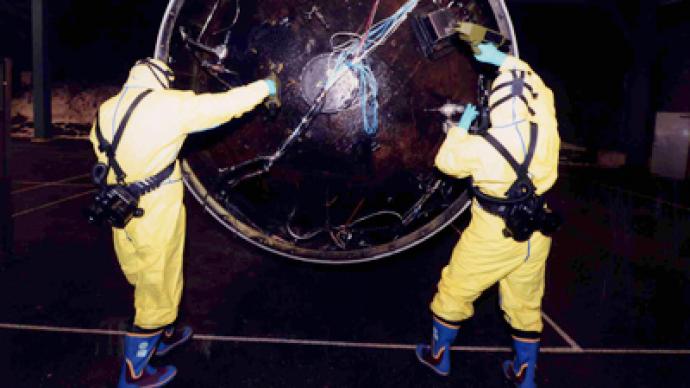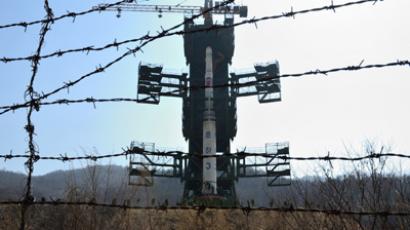N. Korea develops missiles capable of reaching US – Seoul

Pyongyang is developing missiles capable of reaching the US, South Korean officials have claimed. The allegations came as North Korean leader Kim Jong-Un called for the development of more powerful rockets after the successful launch of a satellite.
The North's launch of a three-stage Unha-3 rocket on December 12 prompted numerous allegations that the event was a secret missile test, rather than the purported satellite launch. South Korea has claimed that their analysis of the rocket's debris shows that Pyongyang may have developed technology allowing it to mount a nuclear warhead on a long-range missile."Based on our analysis of the material of Unha-3, North Korea had secured a range of more than 10,000 km if the warhead is 500 to 600 kg," a South Korean Defense Ministry official said on Sunday. If the claims are true, North Korea has developed missiles capable of reaching the US.
South Korea said Sunday that it had retrieved the key parts of the rocket's first stage, except for the engine. The parts recovered included the fuel tank – which displayed the digit '3' – a chemical combustion chamber and an engine connection rod, officials reported.An analysis of the parts will provide a clearer picture of North Korean advances in rocket technology, experts said.They acknowledged, however, that there was no evidence that the North Korean rocket had the guidance systems or re-entry capability necessary for an effective intercontinental ballistic missile.A study of the oxidizer container from the splashdown site of the Unha-3 revealed that the welding of the rocket was “crude, done manually,” a South Korean official said. Nations with advanced space technology rarely use such technology now, he added.On Friday, Kim Jong-Un met with rocket scientists and urged them to advance the country`s long-range rocket program, North Korean state media reported.
The December satellite launch was condemned by several countries and international bodies, including the UN Security Council, who suspected the launch was a cover for illegal missile testing. North Korea maintained that the launch's only goal was putting a satellite into orbit.According to lawyer and peace activist Eric Sirotkin, the North Korean launch was an assertion of the country's technological power.“They believe in their sovereignty and speak about it all the time and consequently they felt that the launch of this missile, if you will, or the satellite was an effort to show that they are highly sophisticated technical nation,” Sirotkin told RT.Pyongyang reportedly spent an estimated $480 million on the rocket launch. Since 1998, North Korea had made four unsuccessful attempts to launch a rocket. Pyongyang is banned from carrying out nuclear tests under a UN resolution passed after it conducted such tests in 2006 and 2009.Despite mounting international pressure, existing sanctions on the country have had little effect, North Korea expert Rudiger Frank says. Frank cautioned, however, that Pyongyang is not likely to engage in military aggression. “It’s in no side’s interest to have war because if we have war in Korea, both Koreas will suffer a lot. As long as the regime is stable in North Korea – and that is actually the key question – I think we shouldn’t be concerned, but there is no immediate danger of a war breaking out,” he said.














